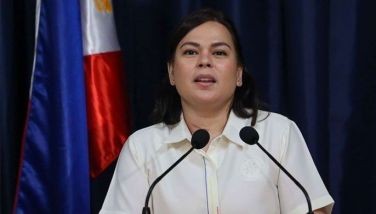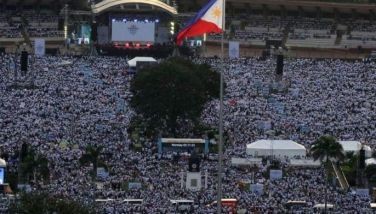Georgetown and slavery

I have been a proud graduate of Georgetown Preparatory School for Boys and Georgetown University College of Arts and Sciences, class of 1956 and 1960 respectively. As students, we took pride in the fact that we were one of the first to admit black students. In Georgetown Prep, the first African American was admitted to the first form (7th grade) in the mid-50s when I was an upperclassman. I remember the awkwardness of having him play in a football team. The prep schools from the South refused to play until our coach informed them that the boy was an Indian prince. Later, as a student in Georgetown College, I was accompanied by a classmate to a small cocktail lounge where we were denied entry because he was black. That classmate was the son of a member of the US House of Representatives. Discrimination was still pretty common in DC, the capital of the United States although not as bad as the Deep South.
On April 17, an article appeared in the New York Times which recounted how 272 black slaves were sold for $500,000 by the two early presidents, no less of Georgetown, Rev. Thomas F. Mulledy S.J. and Rev. William McSherry, S.J. The slaves were sold to help finance its operations. As expected, student demonstrations at the campus last fall helped to galvanize alumni and gave a sense of urgency to the university’s efforts to make amends. Subsequently, the names of Father Mulledy and Father McSherry were removed from two campus buildings.
The article also mentions that “more than a dozen universities — including Brown, Columbia, Harvard, and the University of Virginia — have publicly recognized their ties to slavery and the slave trade. But the 1838 slave sale organized by the Jesuits, stands out for its sheer size, historians say.”
One alumnus, Richard Cellini set up a non-profit organization, the Georgetown Memory Project with the objective of tracing descendants of the 272 slaves. Cellini’s genealogists have traced more than 200 of the slaves from Georgetown to Louisiana. They believe there may be thousands of living descendants.
“Meanwhile, Georgetown’s Working Group (on slavery, memory and reconciliation) has been weighing whether the university should apologize for profiting from slave labor, create a memorial to those enslaved and provide scholarships for their descendants, among other possibilities.” Social media and black organizations have been quite vocal and I suspect something more will materialize in the future.
Also, based on a statement and recommendation by the Working Group, it has begun planning a symposium on the relationship of the university and slavery to coincide with Emancipation Day, the April 16 holiday in the District of Columbia corresponding to the abolition of slavery in the city.
Early this week, I received an alumni newsletter from the headmaster of Georgetown Preparatory School Rev. Scott Pilarz, S.J.:
“On Sunday, April 17, The New York Times ran a front-page story entitled “Georgetown Confronts Its Role in Nation’s Slave Trade.” The story described the sale of slaves in 1838 by the Jesuits who held leadership positions at the school. The profits, approximately 3.3 million in today’s dollars, were used to pay debts the fledgling institution had accrued and to support Jesuit works, including Georgetown. At that time (Georgetown was founded in 1789), and until 1927, what we now know as Georgetown Preparatory School and Georgetown University, were one corporate entity. In fact, the majority of Georgetown students at the time of the sale were teenagers who were not pursuing bachelor’s degrees. As a result, our community needs to acknowledge our past and recommit to the faith that does justice.
This sad chapter in Georgetown Prep’s history is not a recent discovery. As a statement released by the Maryland Province yesterday acknowledges, “Jesuit historians have been at the forefront of bringing this episode to light over the last 40 years.” Nevertheless, in the context of recent turmoil in our nation, it is incumbent on us to reflect upon and learn from the injustices perpetrated by two Jesuit presidents, Thomas Mulledy, S.J., and William McSherry, S.J., who played prominent roles in building our school. As the African-American poet Maya Angelou writes, “History, despite its wrenching pain, cannot be unlived, but if faced with courage, need not be lived again.”
In the near future, we will study and pray about slaveholding and the sale of slaves, especially in 19th century Maryland. I have asked for the assistance of Dr. Stephen Ochs and other members of the faculty to design academic experiences and other ways to memorialize the 272 slaves who were sold in 1838 by Georgetown Jesuits. We will also come together in prayer, as our community always does, seeking understanding and renewal. These recently reported events of the 19th century, as well as events of the past year, clearly indicate that the work of reconciliation between races in our country still has far to go. At Prep, we will redouble our efforts to contribute to progress in this cause.”
For the record, I am also a graduate of the Ateneo College of Law. One of my Ateneo classmates asked: “How did the Spanish Jesuits of that period treat the Indios? Perhaps the Ateneo administration of today can do some research and look into the archives of yesteryear.
- Latest
- Trending





























